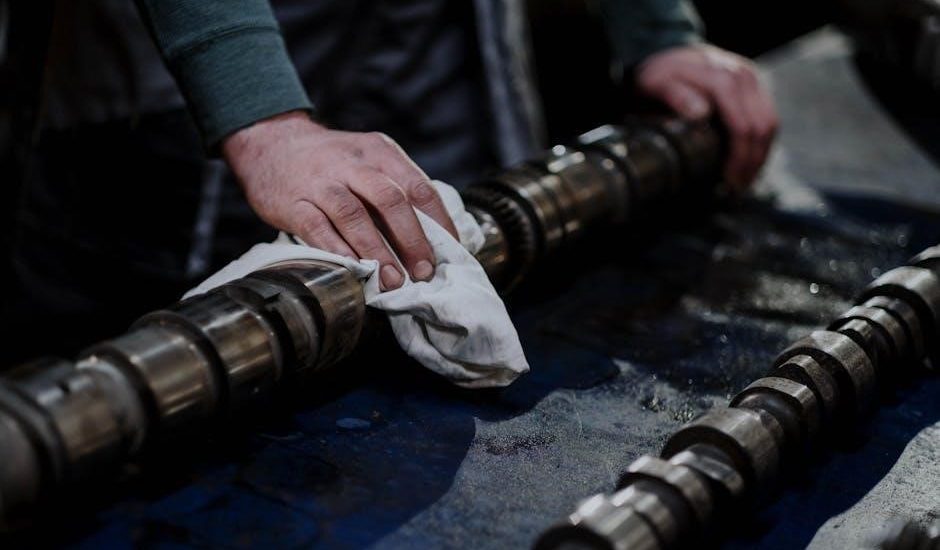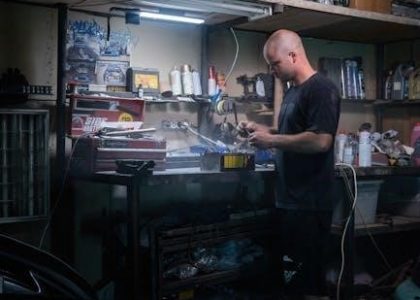The Tennant T7 Parts Manual provides essential operation, maintenance, and parts identification details. It ensures proper servicing and longevity of your Tennant T7 machine, covering standard and optional components effectively.
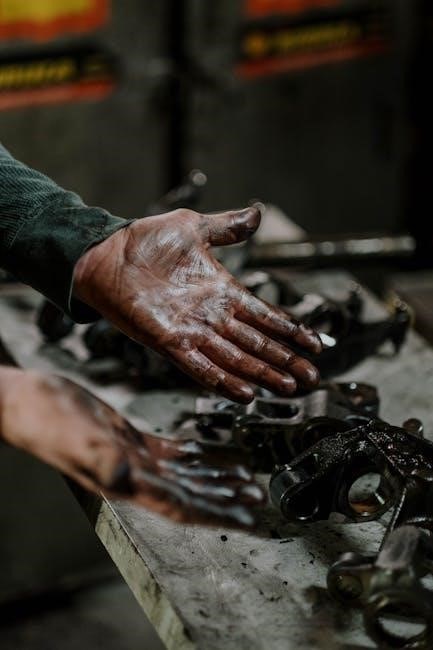
Key Features of the Tennant T7
The Tennant T7 features a compact design, ideal for tight spaces and indoor cleaning. It includes a hygienic recovery tank and supports TennantTrue Parts for optimal performance and longevity.
2.1 Design Overview
The Tennant T7 is built with a highly compact design, making it perfect for cleaning tight spaces that other floor scrubbers might struggle with. Its streamlined construction allows for efficient navigation in indoor environments. The machine features a hygienic, fully cleanable recovery tank, which ensures cleanliness and durability. Additionally, it incorporates IRIS, a advanced Tennant technology designed to enhance cleaning efficiency. The T7 is engineered for ease of use, with intuitive controls and a robust build quality. Its design emphasizes reliability and performance, ensuring consistent results in various indoor cleaning applications. The compact size and advanced features make the Tennant T7 a versatile and practical choice for maintaining clean indoor spaces effectively.
- Compact design for tight spaces
- Hygienic recovery tank
- Advanced IRIS technology
- Robust and intuitive construction
2.2 Technical Specifications
The Tennant T7 is equipped with a 24V onboard charger kit, compatible with both AGM and wet batteries, ensuring versatile power options. The machine features a highly efficient cleaning system designed for indoor applications. Key components include a robust brush motor and a durable recovery tank; The T7 also supports advanced technologies like IRIS, enhancing operational efficiency. For detailed specifications, refer to the operator’s manual, which provides part numbers, configurations, and technical details. Proper maintenance and adherence to these specifications ensure optimal performance and longevity.
- 24V onboard charger (AGM/wet capable)
- Part Number: 275-5121
- Advanced IRIS technology integration
- Durable recovery tank
2.3 Optional Accessories
Enhance your Tennant T7 with a variety of optional accessories designed to improve functionality and adapt to specific cleaning tasks. Popular options include upgraded brush kits, heavy-duty squeegee blades, and extended-life recovery tanks. Additional accessories like ergonomic handlebars and LED light kits are available to enhance operator comfort and visibility. For specialized cleaning needs, chemical injection systems and dust suppression kits can be integrated. These accessories are engineered to maintain the machine’s performance and durability. Always ensure compatibility by referencing part numbers in the manual before installation.
- Upgraded brush kits (Part Number: 275-5134)
- Heavy-duty squeegee blades
- Ergonomic handlebar kit
- LED light package
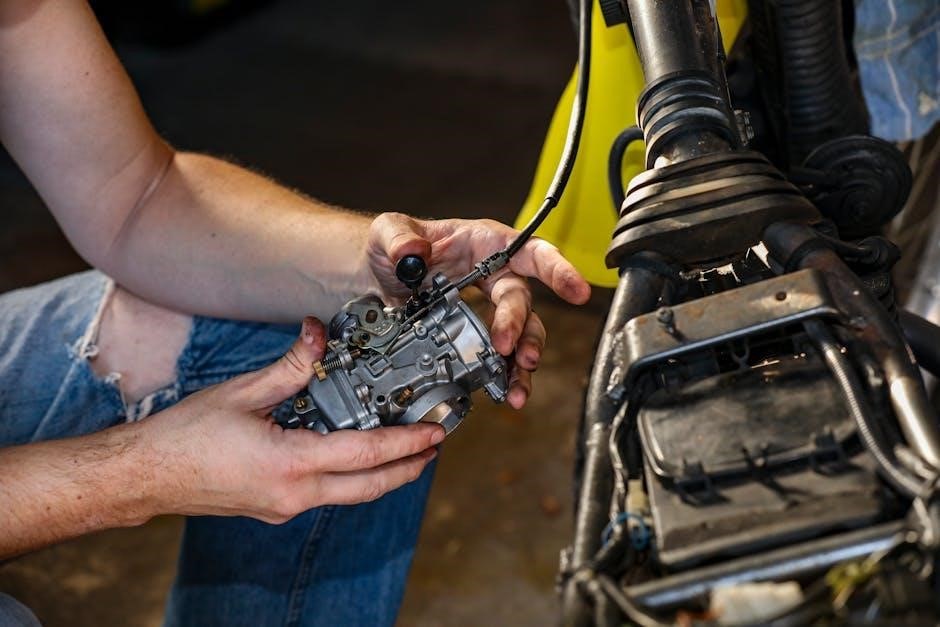
Parts Identification and Description
This section provides detailed descriptions of Tennant T7 components, enabling accurate identification and selection. It includes part numbers and illustrations to ensure precise matching and ordering. Essential for maintenance.
- Component descriptions (e.g., brushes, squeegees)
- Part number cross-referencing
- Visual identification aids
3.1 How to Read Part Numbers
Understanding Tennant T7 part numbers is crucial for accurate ordering and maintenance. Part numbers follow a specific structure, typically consisting of a combination of letters and numbers. The format often includes a prefix identifying the machine model, followed by a series of codes denoting the component type, size, and material. For example, a part number like “T7-1234-AB” breaks down as follows: “T7” indicates the Tennant T7 model, “1234” identifies the specific component, and “AB” may signify the material or variation. Always refer to the manual or Tennant’s official resources for exact decoding. Misreading part numbers can lead to incorrect orders or repairs. Use the provided diagrams and cross-reference charts in the manual to ensure accuracy. Double-checking part numbers with Tennant’s customer support or authorized dealers is recommended for confirmation.
3.2 Common Wear Parts
The Tennant T7, like any industrial cleaning machine, has components that experience wear and tear over time. Common wear parts include brushes, squeegee blades, and bearings. Brushes, especially the main scrubbing brush, wear due to frequent contact with floors. Squeegee blades, which direct water and debris, also degrade and may need replacement to maintain cleaning efficiency. Bearings in the brush motors and wheel axles can wear from constant motion, leading to noise or reduced performance. Regular inspection of these parts is essential to prevent downtime. The manual provides a detailed list of common wear parts and their replacement intervals. Keeping spare parts on hand can minimize operational disruptions. Always refer to the Tennant T7 Parts Manual for part numbers and replacement procedures to ensure proper maintenance and extend the machine’s lifespan.
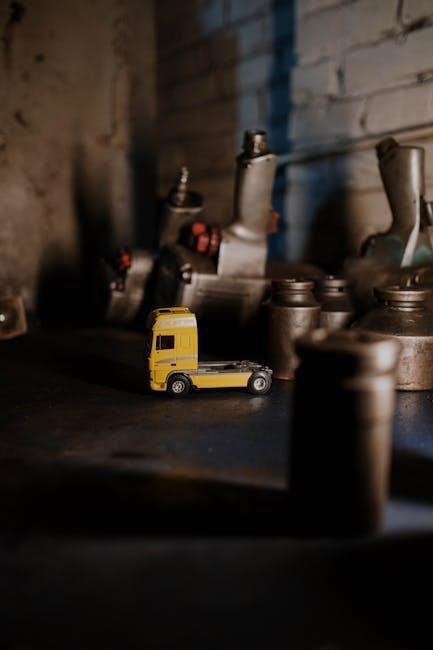
3.3 Diagrams and Schematics
The Tennant T7 Parts Manual includes detailed diagrams and schematics to help users identify and understand the machine’s components. These visual aids are essential for locating parts, diagnosing issues, and performing repairs. The diagrams are organized by sections, such as the brush assembly, vacuum system, and hydraulic components, making it easy to navigate. Schematics provide a breakdown of how parts interact, ensuring proper assembly and maintenance. Color-coded components and labeled illustrations simplify identification. Users can cross-reference diagrams with part numbers listed in the manual. Exploded views of complex systems, like the brush motor or water pump, offer a clear understanding of how parts fit together. These resources are invaluable for both routine maintenance and troubleshooting. Always refer to the diagrams before attempting repairs or ordering parts to ensure accuracy and safety.
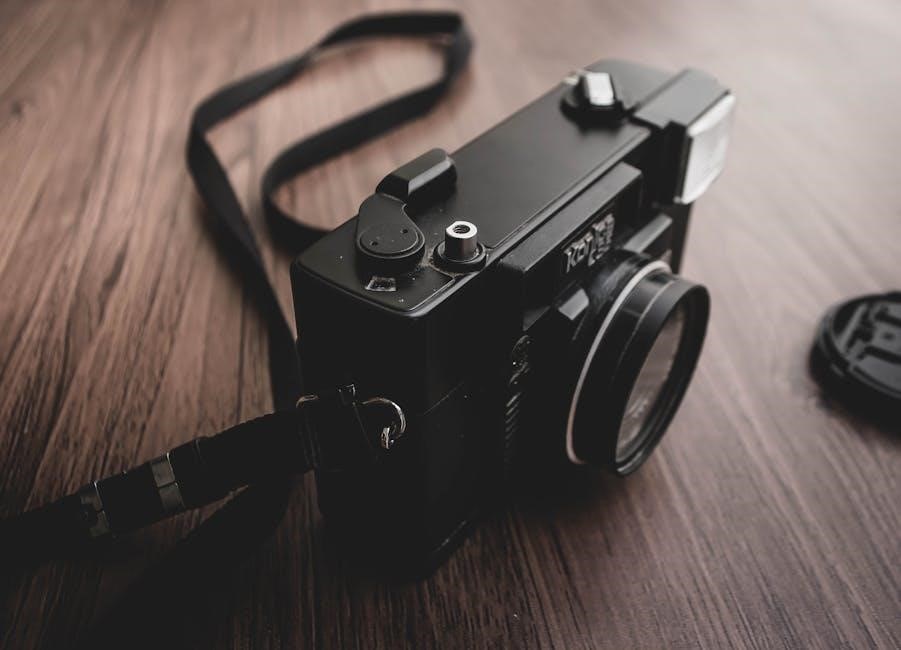
Maintenance and Servicing
Regular maintenance ensures optimal performance of the Tennant T7. Tasks include cleaning, checking fluid levels, and inspecting wear parts. Schedule routine servicing to maintain efficiency and longevity.
4.1 Routine Maintenance Tasks
Regular maintenance is crucial for the Tennant T7’s performance and longevity. Daily tasks include checking and topping off the recovery tank, ensuring the battery water level is adequate, and inspecting pre- and post-filters for cleanliness or blockages. Weekly, operators should clean the exterior and interior, paying attention to the vacuum fan and hoses. Every 100 hours, lubricate moving parts like casters and squeegee bearings. Additionally, inspect belts for wear and proper tension. Monthly, check the brush motor and solution pump for signs of wear. Always refer to the Tennant T7 parts manual for specific guidelines. Schedule professional servicing annually to address complex components. Consistent maintenance prevents downtime, ensures efficiency, and extends the machine’s lifespan. Neglecting these tasks can lead to reduced performance or premature wear of critical parts.
4.2 How to Replace Common Parts
Replacing common parts on the Tennant T7 is straightforward when following proper procedures. Begin by consulting the parts manual to identify the specific part number and location. For example, replacing the brush or squeegee blades typically requires loosening screws or clips. Always disconnect the battery or power source before starting any replacement to ensure safety. Use the provided diagrams to locate bolts or fasteners. Remove the old part carefully and install the new one, ensuring it is securely fastened. Reassemble any components in the reverse order of disassembly. Test the machine to confirm proper function after replacement. Regularly replacing worn parts, such as brushes or filters, prevents reduced performance. Keep genuine Tennant parts on hand for quick repairs. Proper replacement techniques help maintain the machine’s efficiency and extend its operational life.
4.3 Lubrication and Filter Replacement
Proper lubrication and filter replacement are essential for maintaining the Tennant T7’s performance and longevity. Regularly lubricate moving parts, such as wheel bearings and pivot points, using the recommended grease specified in the manual. Filters, including air and hydraulic filters, should be replaced at intervals outlined in the maintenance schedule to ensure optimal functionality. Neglecting these tasks can lead to reduced efficiency, increased wear, and potential system damage. Always use genuine Tennant parts for replacements to guarantee compatibility and quality. Before performing any maintenance, refer to the manual for specific instructions and safety precautions. Clean the area around filters and lubrication points to prevent contamination. Lubrication and filter replacement are critical for keeping the T7 running smoothly and preventing costly repairs down the line. Stay proactive to maintain peak performance and extend the machine’s operational life. Regular checks and timely replacements are key to its reliability.

Troubleshooting and Repair
Troubleshooting the Tennant T7 involves identifying common issues like error codes or motor malfunctions. Use diagnostic tools and the manual to pinpoint problems. Repair guidance ensures quick resolution, minimizing downtime and ensuring optimal performance safely. Regular checks prevent major breakdowns, while detailed repair procedures help maintain efficiency and extend the machine’s lifespan effectively.
5.1 Common Issues and Solutions
The Tennant T7 may experience issues such as battery failure, unusual noise, or error codes. For battery problems, check connections and charge levels. Strange noises often indicate worn brushes or faulty motors, which can be replaced. Error codes can be diagnosed using the manual’s troubleshooting guide. Clogged vacuum ports or blocked filters may reduce suction power; clean or replace these components as needed. If the machine doesn’t turn on, ensure the power switch is functioning and all safety features are engaged. For hydraulic issues, inspect fluid levels and hoses for leaks. Always refer to the manual for specific repair steps and safety precautions. Addressing these common issues promptly ensures optimal performance and extends the machine’s lifespan. Regular maintenance can help prevent many of these problems, keeping the Tennant T7 operating efficiently.
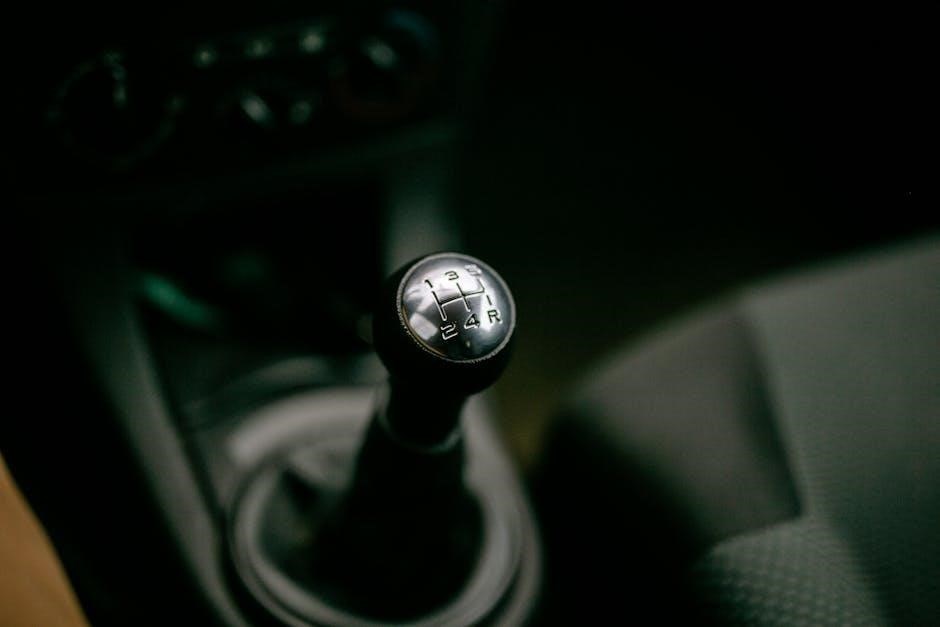
5.2 Diagnostic Techniques
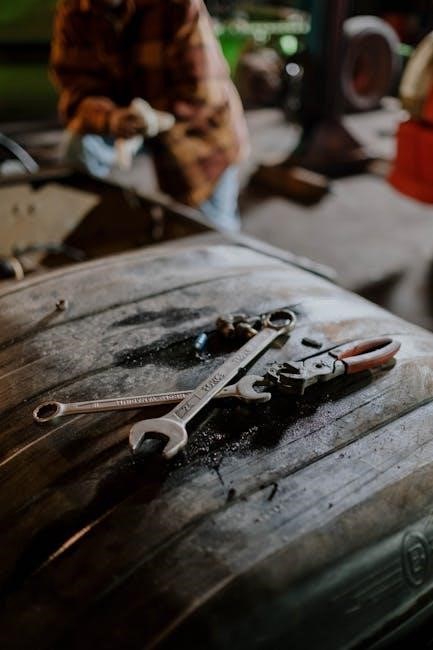
Diagnosing issues with the Tennant T7 requires a systematic approach. Start by consulting the troubleshooting guide in the manual, which lists common symptoms and potential causes. Use diagnostic tools like multimeters to test electrical components and ensure proper voltage. For error codes, refer to the manual’s code list to identify specific malfunctions. Visually inspect wires, hoses, and connections for damage or wear. Test battery voltage and charge levels if power issues arise. For mechanical problems, check for blockages or misalignments in moving parts. Utilize the Tennant T7’s built-in diagnostic features, such as dashboard indicators, to pinpoint issues. Always follow safety protocols and manufacturer guidelines during diagnostics. If unsure, consult a certified technician to avoid further damage. Regular diagnostic checks can help prevent major repairs and keep the machine running smoothly.
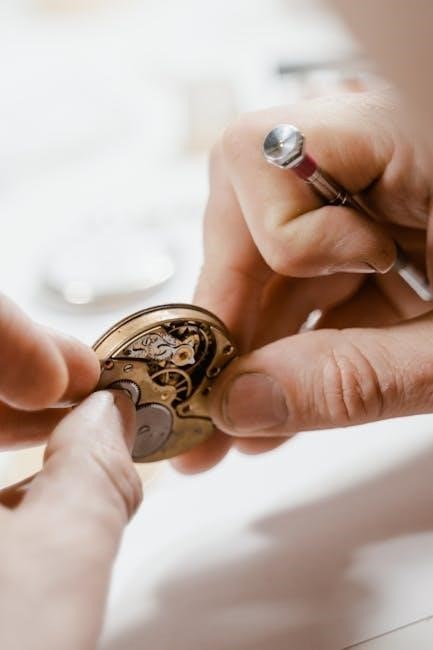
Ordering Parts and Supplies
Ordering genuine Tennant T7 parts ensures compatibility and performance. Always use the correct part numbers from the manual. Contact authorized Tennant distributors or visit their official website for seamless transactions.
6.1 Where to Buy Genuine Tennant Parts
To ensure authenticity and quality, purchase Tennant T7 parts exclusively from authorized distributors or directly through Tennant’s official website. Genuine parts are engineered to meet exact specifications, guaranteeing optimal performance and longevity. Local Tennant dealers and certified service centers also offer reliable options; Always verify the seller’s credentials to avoid counterfeit products. For convenience, Tennant’s online portal provides a comprehensive list of approved suppliers worldwide. This ensures easy access to genuine components, maintaining your machine’s warranty and operational integrity. Visit the Tennant website or contact their customer support for a detailed directory of authorized retailers.
6.2 How to Order Parts
Ordering genuine Tennant T7 parts is a straightforward process. Start by visiting the official Tennant website or contacting an authorized distributor. Use the part numbers listed in the manual to ensure accuracy. Online platforms often feature a user-friendly interface where you can search, select, and add items to your cart. For bulk orders or specific inquiries, contact Tennant’s customer service team directly via phone or email. Always provide the full part number and quantity to expedite processing. Once your order is confirmed, you’ll receive a tracking number for monitoring delivery. Payments can typically be made via credit card, check, or approved company accounts. For international orders, check with local distributors for shipping and customs details. Ensure all orders are placed through official channels to guarantee authenticity and warranty coverage.
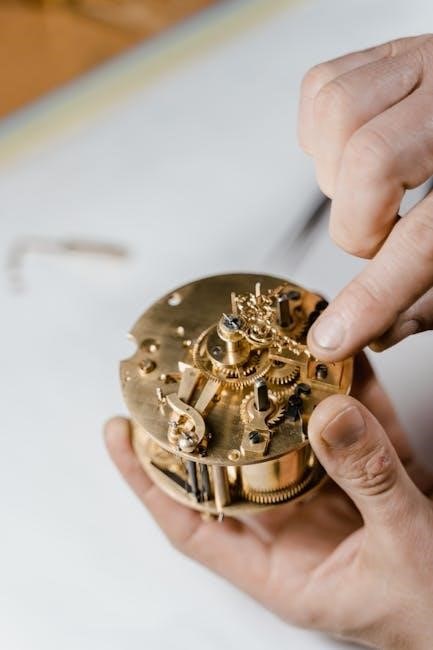
Safety Guidelines and Precautions
Adhere to manufacturer guidelines, wear protective equipment, and ensure machines are powered off during maintenance. Be aware of sharp edges, heavy components, and potential chemical exposure. Prioritize operator safety always.
7.1 Operating Safety Tips
Always follow safety guidelines when operating the Tennant T7 to minimize risks and ensure safe functioning. Conduct pre-operation checks to verify all components are secure and functioning properly. Wear appropriate personal protective equipment, including gloves and safety glasses, when handling or maintaining the machine. Ensure the area is clear of obstacles and bystanders before starting tasks. Avoid operating the machine in wet or slippery conditions to prevent accidents. Keep loose clothing and long hair tied back to avoid entanglement with moving parts. Never bypass safety features or tamper with safety devices, as this can lead to serious injury. Follow the manufacturer’s instructions for loading and unloading materials to avoid overloading the machine. Properly shut down and allow the machine to cool before performing maintenance or repairs. Always refer to the Tennant T7 Parts Manual for specific safety recommendations tailored to your model.
7.2 Protective Equipment
Using proper protective equipment is essential when operating or servicing the Tennant T7 to ensure personal safety. Always wear heavy-duty gloves to protect hands from cuts, abrasions, and chemical exposure. Safety glasses or goggles should be worn to prevent eye damage from debris or cleaning agents. A dust mask is recommended when handling dusty or hazardous materials. Steel-toe boots or sturdy footwear are necessary to protect feet from heavy objects or equipment. Avoid loose clothing that could get caught in moving parts. High-visibility vests can enhance visibility in low-light environments; Ensure all protective gear fits properly and is in good condition. Failure to use appropriate protective equipment can lead to injuries, legal penalties, or non-compliance with workplace safety regulations. Always follow the Tennant T7 Parts Manual guidelines for recommended safety gear tailored to specific tasks and environments.

